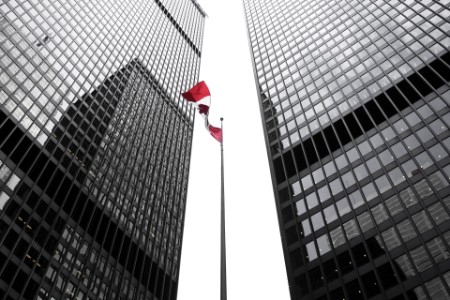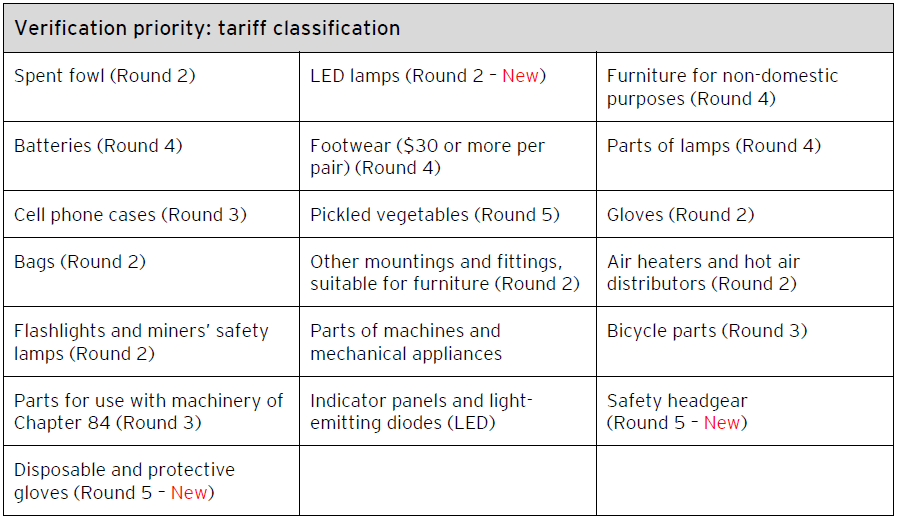
Trade compliance verification list update: January 2023
Tax Alert 2023 No. 02, 31 January 2023
The Canada Border Services Agency (CBSA) released its semi-annual list of trade compliance verification (audit) priorities in January 2023. The list is designed to update the importing community on ongoing verification priorities and set the stage for new priorities for the upcoming calendar year.
The CBSA continues to focus on tariff classification as a priority audit area, with the introduction of three new rounds to the list of tariff classification priorities and one new round to the list of valuation verification priorities.
Background
The CBSA uses trade compliance verifications to ensure that importers comply with customs legal requirements and programs. The main objectives of conducting verifications are to:
- Assess an importer’s compliance with CBSA-administered legislation;
- Determine compliance within industry sectors;
- Conduct a review of an importer’s liabilities and entitlements; and
- Assess the integrity of trade data received from importers.
The CBSA manages trade compliance within three specific program categories — tariff classification, valuation and origin — using two post-release verification processes: random statistical-based verifications and targeted verification priorities.
Random statistical-based verifications
Verifications, which are selected using a statistical model, are designed to measure compliance rates and revenue loss. The results from these types of verifications are used by the CBSA for many purposes, including risk assessment (which may lead to targeted verification priorities — see below), revenue assessment and the promotion of voluntary compliance.
Targeted verification priorities
Targeted verification priorities are established using a risk-based, evergreen process, so that new targets are added throughout the year. Verification priorities may also be carried over from previous years.
It is important to note that importers that deal in products or industries that are not marked as verification priorities should not presume that they have avoided a verification this year. Through random statistical-based verifications, the CBSA continues to verify importers in sectors and industries not included in the list of verification targets.
Verification priorities: new targets for tariff classification
The first release of verification priorities for 2023 encompasses 19 tariff classification verification priorities, including three new rounds incorporated to the program.
The continued focus on tariff classification may be due to the relative ease of verifying that goods have been classified correctly for customs purposes. Increased audit activity in this program may also lead to higher revenues for the CBSA.
The following chart lists all current tariff classification priority items:

The CBSA has included three additional product categories targeted for tariff classification verification — LED lamps (Round 2), safety headgear (Round 5) and disposable and protective gloves (Round 5).
Verification priority: valuation
Current CBSA valuation priority targets continue to be focused on apparel, while the footwear category was omitted from this update of the verification list. Apparel importers should assess whether they are prepared for a valuation verification audit. CBSA valuation audits targeting these imports have revealed that importers are omitting additions to the price paid or payable of goods mandated by statute, such as design “assists,” not taking into account transfer price adjustments made for tax purposes, or not putting proper documentation in place to account for non-dutiable agent commissions, where applicable.
In addition, importers that purchase goods from related parties and use transfer pricing as the basis for customs values should consider their record-keeping obligations and whether the documentary support on record is sufficient to defend the use of a transfer price as the basis for customs value.
Verification priority: origin
Once again, no new official origin verification priorities were added for this update.
However, goods originating from Russia and Belarus may be under increased scrutiny by the CBSA since the Government of Canada announced withdrawal of the Most-Favoured-Nation (MFN) tariff benefit for these countries, effective 2 March 2022.1
As such, goods originating in Russia and Belarus are generally subject to the General Tariff customs duty rate of 35%.
As noted by the CBSA, it is a priority for the Government of Canada to ensure that goods originating from both countries do not enter the Canadian economy under the MFN tariff treatment. Where goods are produced with inputs from Russia or Belarus, at least 50% of the cost of production must have been incurred in one or more MFN beneficiary countries or Canada to benefit from MFN beneficial tariff treatment.
The full listing of CBSA trade compliance verification priorities can be found on the CBSA’s website: https://www.cbsa-asfc.gc.ca/import/verification/menu-eng.html.
Takeaways for importers
CBSA verifications can be time-consuming and costly for importers. Companies must be proactive and adopt an informed compliance mindset. Best practices for companies include implementing programs, frameworks and methodologies to help maintain and continuously improve their customs and trade compliance management profile.
Learn more
For more information, please contact one of the following EY Global Trade professionals.
Sylvain Golsse
+1 416 932 5165 | sylvain.golsse@ca.ey.com
Camilla da Matta
+1 416 943 2647 | camilla.damatta1@ca.ey.com
Elizabeth Kayiya
+1 416 941 3051 | elizabeth.kayiya@ca.ey.com
_____________________________
[1] For more information, see EY Tax Alert 2022 Issue No. 44, Government of Canada announces withdrawal of Most-Favoured-Nation tariff benefit on goods originating in Russia and Belarus.
Budget information: For up-to-date information on the federal, provincial and territorial budgets, visit ey.com/ca/Budget.
